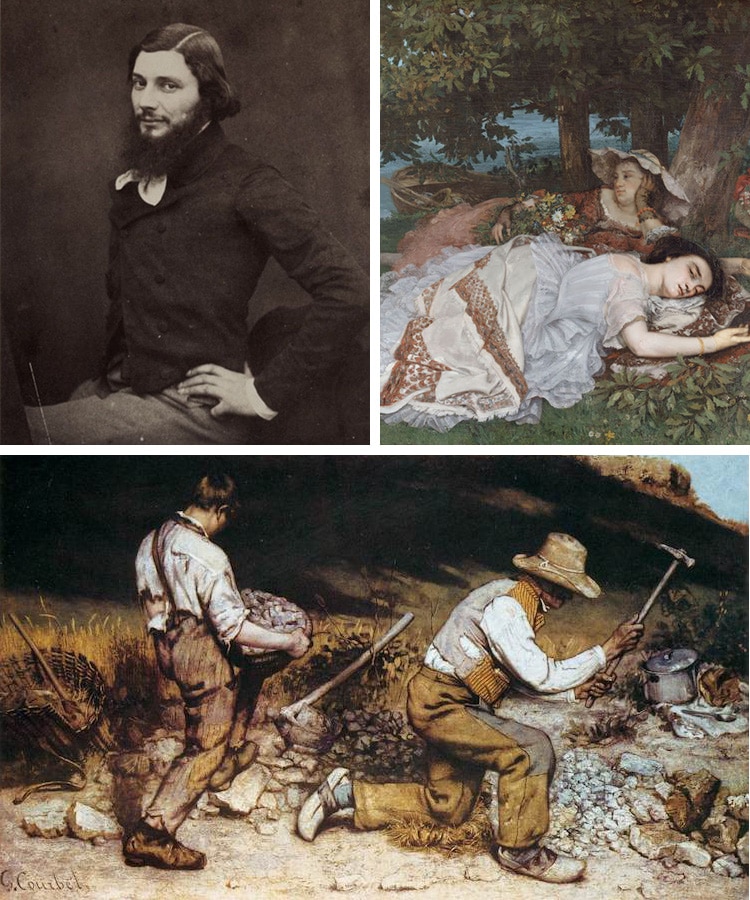
The 19th century was a time of significant artistic change in Europe, particularly in France. While the era began with an emphasis on Romanticism, another movement arose in the 1840s that drastically altered the course of art history. Based in France, Realism emphasized the lives of ordinary, working-class people in contemporary settings. Gustave Courbet was at the heart of this movement, creating large-scale depictions of peasants that shocked the country.
While artists like Delacroix previously created idealized scenes with an emphasis on drama and emotion, Courbet pursued art that conveyed the truth of how average laborers were living in 1850s France. “It is society at its best, its worst, its average,” he said of his practice. “In short, it’s my way of seeing society with all its interests and passions. It’s the whole world coming to me to be painted.”
Scroll down to learn more about Courbet and the characteristics of his art.
Who was Gustave Courbet?
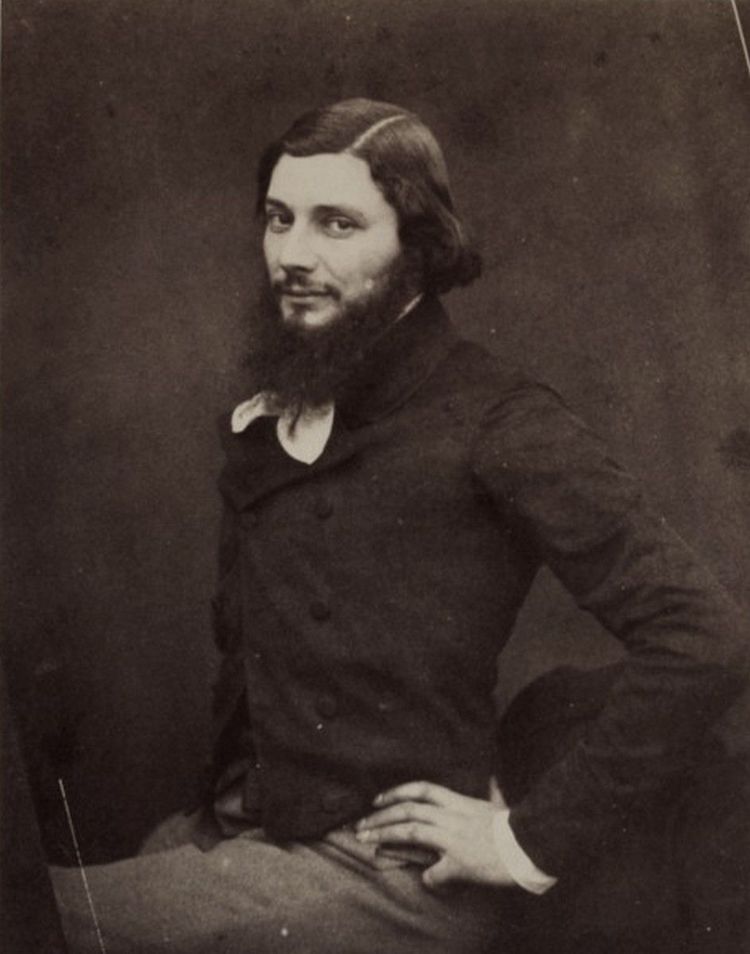
Daguerrotype photo of Gustave Courbet, c. 1850 (Photo: Felix Nadar via Wikimedia Commons, Public domain)
|
Full Name
|
Jean Désiré Gustave Courbet
|
|
Born
|
June 10, 1819 (Ornans, France)
|
|
Died
|
December 31, 1877 (La Tour-de-Peilz, Switzerland)
|
|
Notable Artwork
|
A Burial at Ornans
|
|
Movement
|
Realism
|
Gustave Courbet (1819 – 1877) was an influential 19th-century painter who led the Realist movement in the mid-to-late-1800s. Born into a well-off farming family in Ornans, France, he studied painting in Paris before leaving to develop his own style. During his travels as a young adult, he became inspired by Rembrandt and Dutch masters for their depictions of contemporary life.
By the time Courbet was about 30, he settled into a style that did not belong to Romanticism or Classicism. Instead of portraying idealized figures and historical scenes, Courbet was interested in rural life. He believed that artists should paint what they knew, which in his case was the French countryside. An independent spirit and avid political thinker, his oeuvre included paintings of peasants, workers, landscapes, nudes, and still lifes.
Characteristics of Courbet’s Art
Interest in Country Life
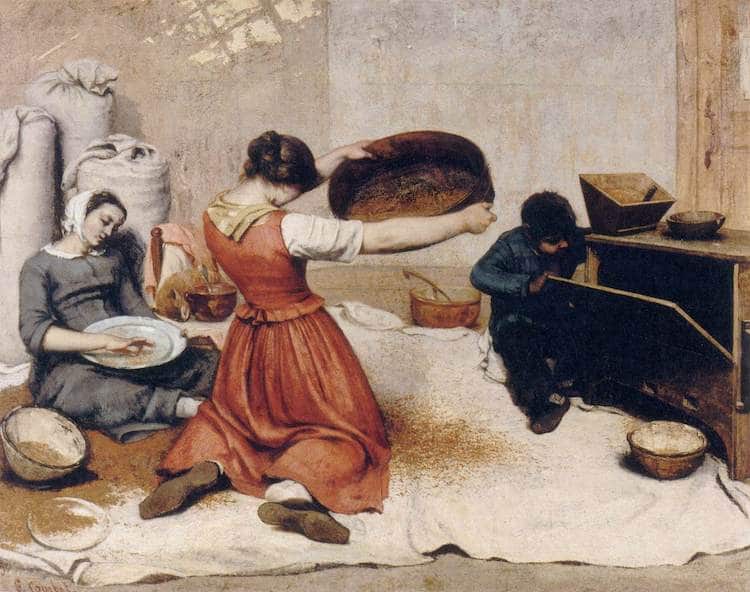
Gustave Courbet, “The Wheat Sifters,” 1854 (Photo: Musee D’Arts De Nantes via Wikimedia Commons, Public domain)
As a realist, Courbet believed that his art should highlight the lives of working-class French people in contemporary settings. He thought artists should portray what was familiar to them; because he grew up in the country, he gravitated towards depictions of farmers and rural workers.
Realistic Figures
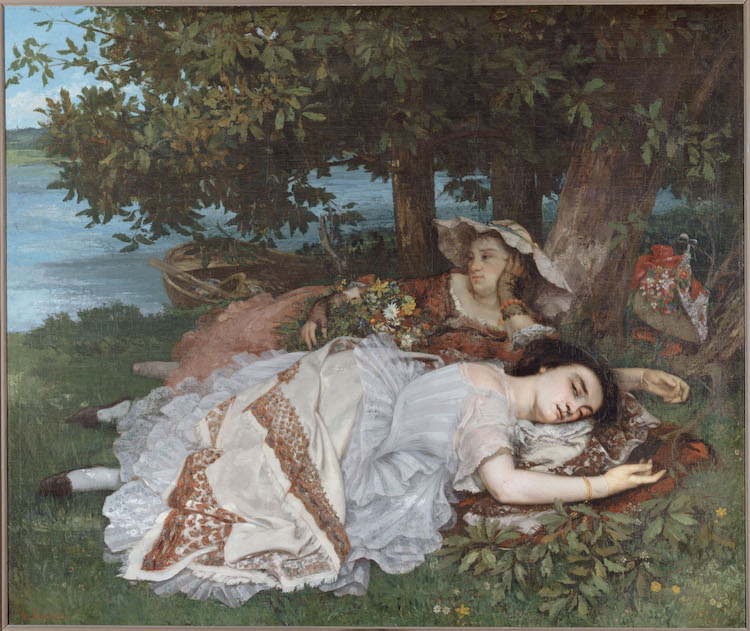
Gustave Courbet, “Young Ladies Beside the Seine,” 1857 (Photo: Musée des Beaux-Arts via Wikimedia Commons, Public domain)
Courbet had no interest in idealizing his figures. Since he was dedicated to portraying the harsh reality of life, he wanted to base the characters in his paintings on real-life people. Oftentimes, this meant using friends, family members, sex workers, or laborers that he asked to come to pose for him at his studio.
Rough Handling of Paint
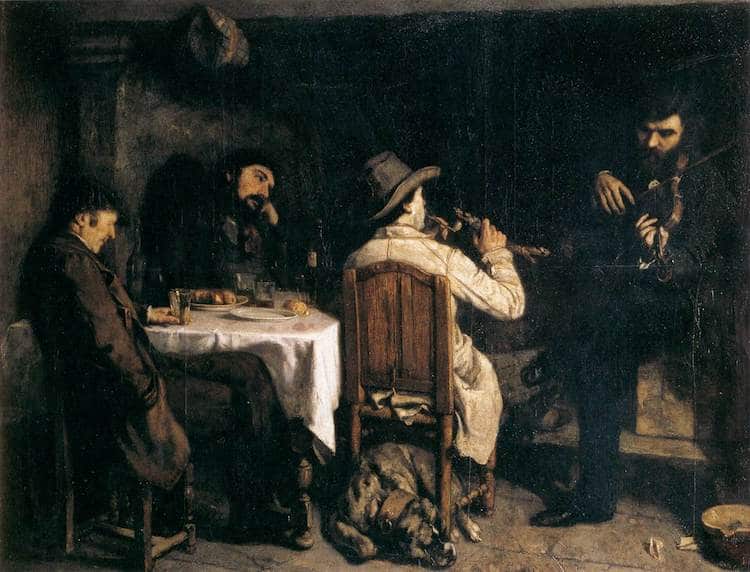
Gustave Courbet, “After Dinner at Organs,” 1857 (Photo: Palais des Beaux-Arts de Lille via Wikimedia Commons, Public domain)
Instead of carefully modeling his figures and creating smooth shapes and lines, Courbet preferred to apply paint in a rough, expressive manner. In his opinion, this crude stylistic approach more accurately reflected the anomalies of nature.
Grand Scale
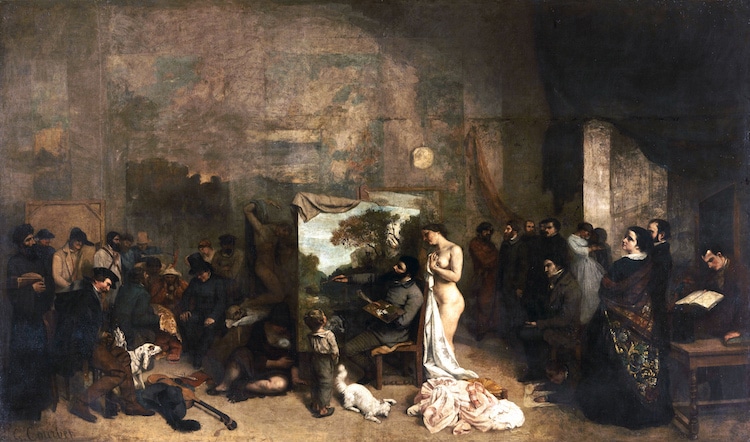
Gustave Courbet, “The Painter’s Studio,” 1849–1850 (Photo: Musée d’Orsay via Wikimedia Commons, Public domain)
Many of Courbet’s most famous works were also large in scale. And while this is not extraordinary on its own, Courbet’s use of scale caused controversy because he utilized it to give importance to subjects that were not deemed worthy, like ordinary people.
Famous Paintings
The Stonebreakers, 1849
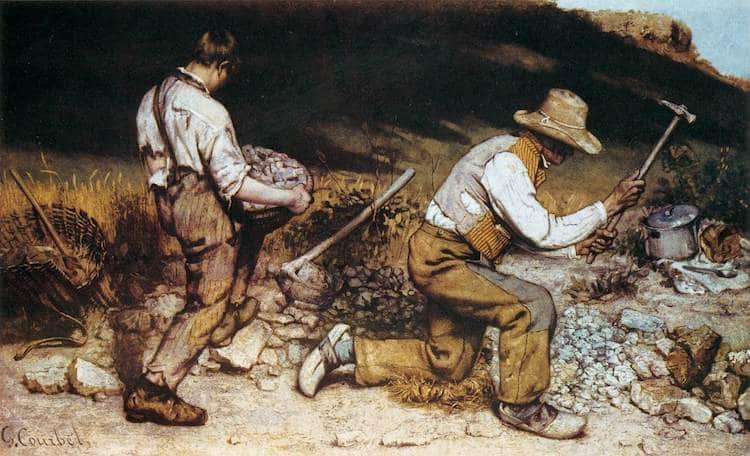
Gustave Courbet, “The Stonebreakers,” 1949 (Painting lost due to fire in 1945) (Photo: Wikimedia Commons, Public domain)
Made in 1849, The Stonebreakers depicts “so complete an expression of poverty.” The two individuals, whose faces are turned away from the viewer to maintain their anonymity and keep them as representatives of a group, are at work breaking up rocks on the side of the road. This large-scale depiction shocked audiences a the Paris Salon with its realism.
Unfortunately, the masterpiece was destroyed during WWII.
A Burial at Ornans, 1849–1850

Gustave Courbet, “A Burial at Ornans,” 1849–1850 (Photo: Musée d’Orsay via Wikimedia Commons, Public domain)
Measuring 10 by 22 feet, Courbet’s A Burial at Ornans is a massive portrayal of ordinary townspeople. He based all of the figures and the event itself on the funeral of his great uncle. By placing these everyday people on such an important scale—which was normally reserved for grand, historical narratives—he was viewed as a “terrible socialist” who was using his incredible painting talents to create ugly and unwanted works of art.
Legacy
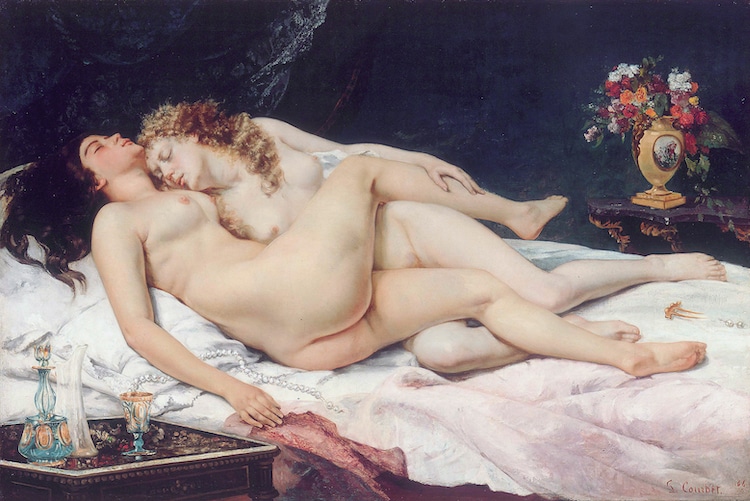
Gustave Courbet, “The Sleepers,” 1866 (Photo: Petit Palais via Wikimedia Commons, Public domain)
Courbet had an enormous impact on the course of art history. French art critic Guillaume Apollinaire said, “Courbet is the father of the new painters.”
His unusual approach to painting—the focus on imperfections and the reality of the common people—influenced many later artists. Many of the Impressionist and Post-Impressionist painters, like Monet and Cézanne, referred to him as a major source of inspiration in the development of their styles.
Related Articles:
Learn About Eugène Delacroix, the Pioneering French Romantic Painter
18 Famous French Painters Every Art Lover Should Know About
How Artists Have Kept Still Life Painting Alive Over Thousands of Years
10 Important Impressionist Painters Who Shaped the Iconic Movement
